New-found status for Shrimp
By Frank Whitman
Shrimp are having a moment with new-found status on fine dining menus.
You’re right if you’re thinking that shrimp never went away. The tasty crustaceans, large or small, are a perpetually popular feature of cocktail hour hors d’oeuvre, lavish buffets, and Mediterranean entrees.
But now the shrimp cocktail is back – making an appearance on the high concept menus of notable chefs. Too good to be forgotten, it’s a timeless luxury that needed an updated image so that a new generation could discover the magic of perfectly-cooked shrimp graced with a flavorful sauce.
These aren’t the shrimp cocktails of decades ago – modestly-sized shrimp and horseradish sauce. Chefs have updated the classic with larger shrimp, more sophisticated cooking, and innovative sauces.
Ben Freemole (CT Mag Best Up-and-Coming chef in 2020) takes a path less traveled for his presentation at the GrayBarns Tavern in Norwalk. “In order to control the cook time, we steam our shrimp,” he shared. “Once the shrimp are steamed to our liking, we plunge them into what we have coined as a ‘reverse court bouillon’. We replace a traditional ice-water bath with a potent and flavorful one based on the flavors you find in court bouillon – loads of herbs, aromatics, citrus and of course white wine.” This method yields perfectly cooked, flavorful shrimp.
The shrimp are flecked with the spices when they come to the table. Marsha’s comment from her first bite was, “fennel.” Sure enough I could spot fennel seeds clinging to the shrimp.
Freemole’s riff on the classic cocktail sauce is a deeply-flavored, but not overwhelming, blend of smoked ketchup spiked with calabrian chilis, green tabasco and horseradish.
Offered as a special (almost every day) at $5 apiece, order as many as you like of the large (8/12) crustaceans.
At Il Leone in Greenwich, the shrimp cocktail ($18) is a popular starter. Depending on market availability it includes three massive U/8 or five large U/12 shrimp. Either way, the shrimp are simmered just until they turn color from white to pink in a broth flavored with celery, carrot, onion, black peppercorns and plenty of salt. “The water should be salty,” Chef Dianna advised, “Tasting like the sea.”
The Il Leone shrimp come with two condiments: Louie sauce and a more traditional horseradish cocktail sauce. The Louie sauce, derived from the California Shrimp Louie dressing, is a mix of mayonnaise, ketchup, chili sauce and Cognac.
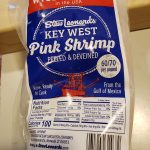 Size does matter for shrimp. They are labeled according to how many shell-on pieces are in a pound. In the popular 21/25 size there would be roughly that many in a pound, weighing about ⅔ of an ounce each. 26/30 are smaller while 16/20 are larger. There’s no lack of descriptive hyperbole in the shrimp world. 21/25 are called jumbo and 16/20 extra-jumbo even though they’re mid-size.
Size does matter for shrimp. They are labeled according to how many shell-on pieces are in a pound. In the popular 21/25 size there would be roughly that many in a pound, weighing about ⅔ of an ounce each. 26/30 are smaller while 16/20 are larger. There’s no lack of descriptive hyperbole in the shrimp world. 21/25 are called jumbo and 16/20 extra-jumbo even though they’re mid-size.
Really big shrimp are described by a number led by the letter U meaning under that number of shrimp make up a pound. U8 shrimp are 8 to the pound and weigh about two ounces. U12 are a little smaller, but still weigh over an ounce.
The smaller the shrimp, the quicker they cook, which requires vigilance at the stove. The price of a moment’s inattention is shrimp that are dry and tough. Traditionally the water is flavored with 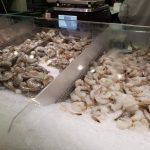 aromatics, lemon, bay leaves and lots of salt, but Chefs like Freemole are developing new methods.
aromatics, lemon, bay leaves and lots of salt, but Chefs like Freemole are developing new methods.
I favor larger sizes for almost any use. Even though they are more expensive they’re not as easy to overcook and are more impressive on the plate.
Shrimp in the store, cooked or raw, has almost always been frozen. Highly perishable, they must be frozen as soon as possible after harvest. Displayed shell-on or shelled, cooked or raw, the shrimp you see at the market have been thawed.
In areas where wild shrimp are still harvested, it’s possible to get fresh shrimp right-off-the-boat at well-connected local markets. On a recent trip to Hilton Head, South Carolina fresh shrimp were in season.
The shrimp were a discernible step-up in flavor and texture in Marsha’s Shrimp Creole.
More than half the shrimp sold in the United States are farmed, mostly in Asian countries. There are still some wild-caught sources for shrimp. Stew Leonard’s has been featuring frozen, raw 60/70 count Key West pink shrimp from the Gulf of Mexico. “Wild caught” is in a big red banner at the top of the bag.
Shrimp has always been the most popular shellfish in America. Keep an eye out for delicious, innovative presentations that are popping up on menus – giving us new ways to enjoy this old favorite.








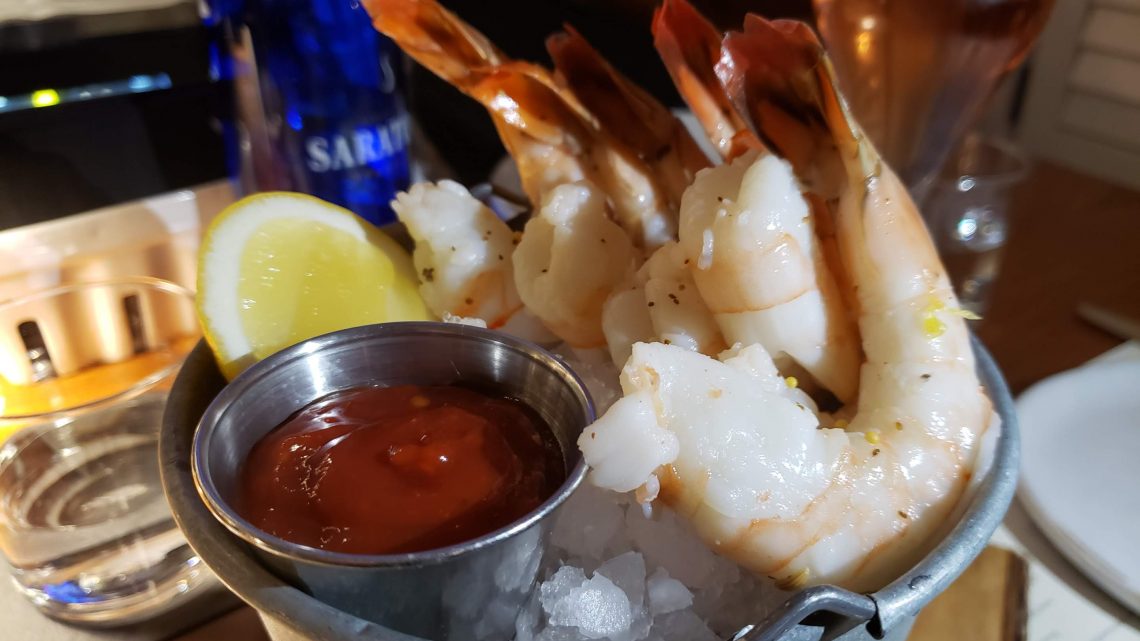
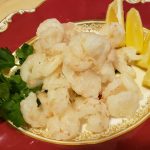
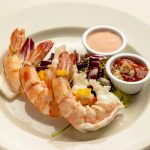

No Comment